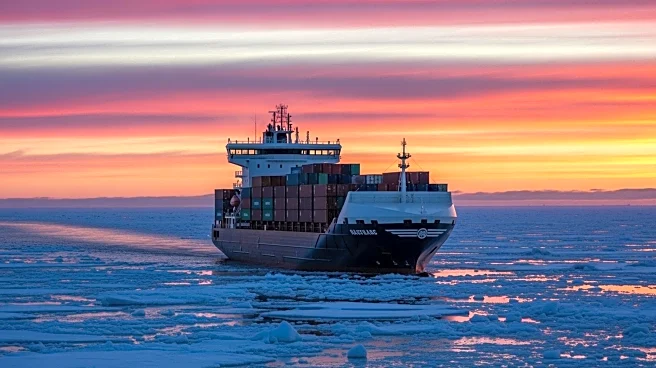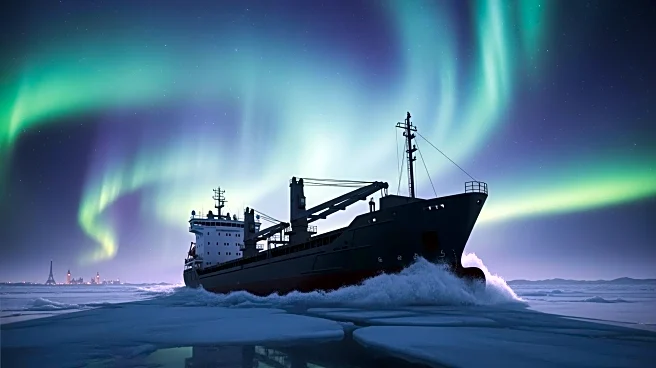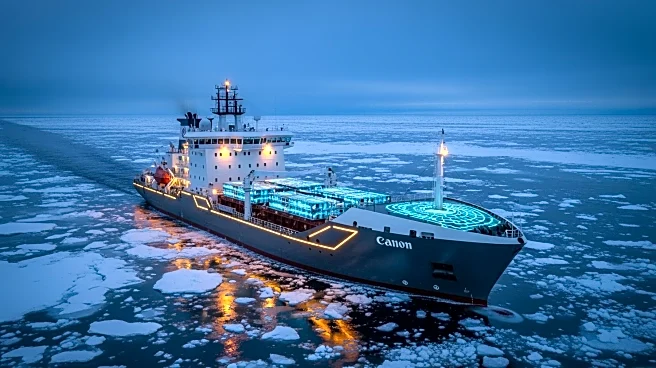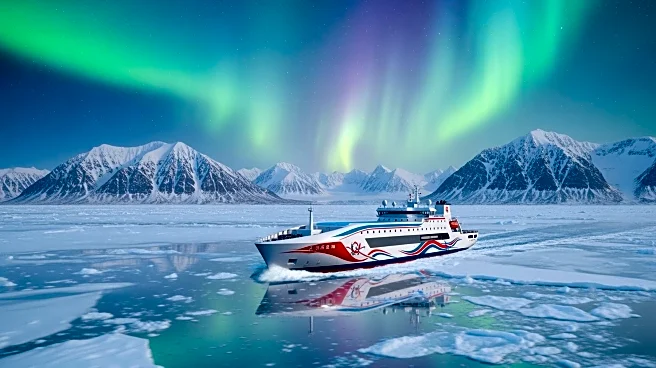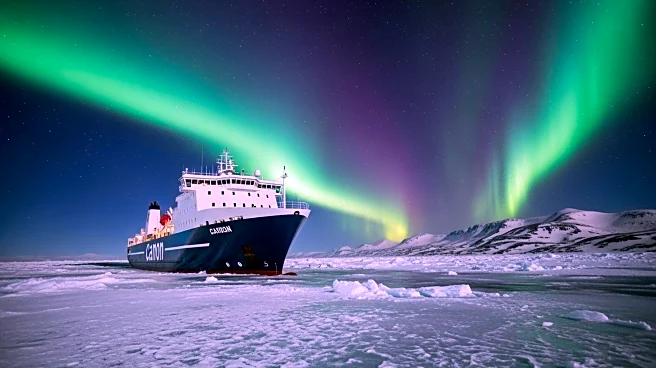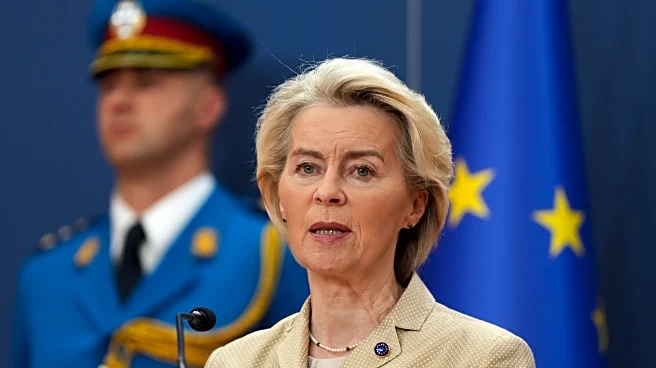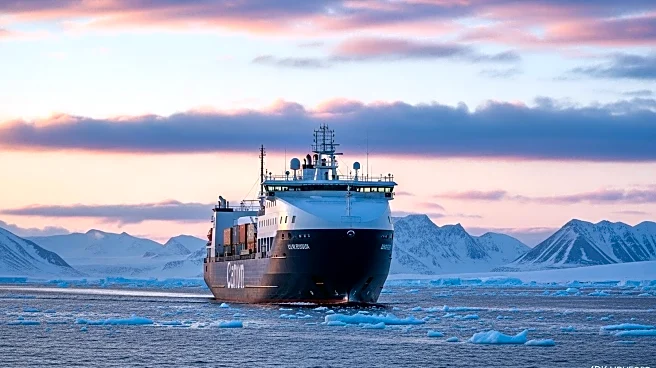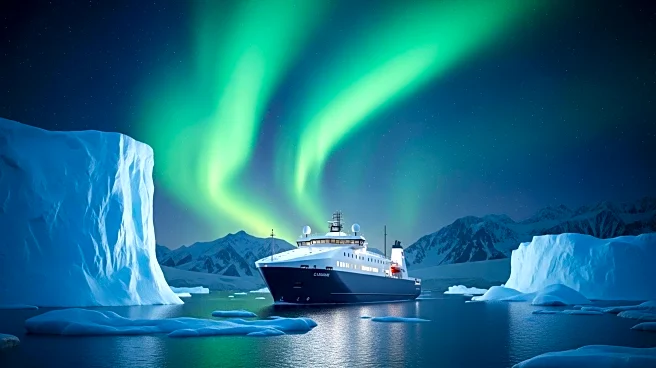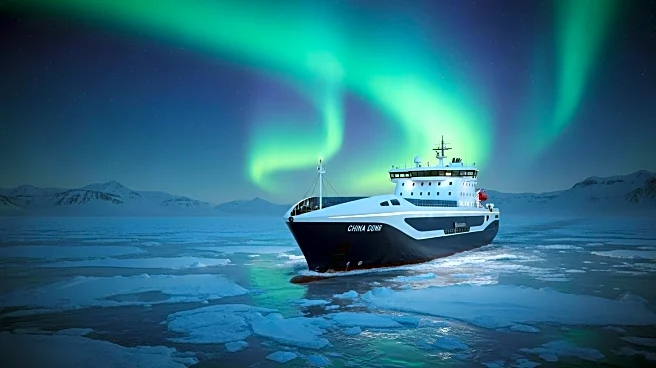What's Happening?
A Chinese container ship, the Istanbul Bridge, has successfully completed a pioneering journey through the Arctic to a UK port, significantly reducing the usual transit time for goods destined for Europe.
According to state-run news agency Xinhua, the ship carried around 4,000 containers from the Chinese port of Zhoushan and docked in Felixstowe, Britain's largest container port. The voyage, which was delayed by two days due to a storm off the coast of Norway, still managed to reach Europe earlier than the typical 40 to 50 days required for freighters traveling through the Suez Canal or around the Cape of Good Hope. This new Northern Sea Route, running entirely through Arctic waters within Russia's exclusive economic zone, has become navigable due to global warming, offering a faster maritime link between China and the European Union.
Why It's Important?
The successful completion of this Arctic voyage marks a significant development in global shipping routes, potentially altering trade dynamics between China and Europe. As China is currently engaged in a costly trade war with the United States, diversifying export markets is crucial for sustaining economic growth. The new route offers a strategic alternative to traditional paths, reducing reliance on the Strait of Malacca and potentially increasing trade efficiency. This could lead to increased exports to Europe, which rose by 14% in September, while shipments to the U.S. fell by 27%. The Arctic route's viability is a result of the region warming four times faster than the global average, creating seasonal windows for commercial shipping.
What's Next?
The development of the Arctic route may prompt further maritime cooperation between China and Russia, as both countries seek to capitalize on the new shipping opportunities. The unpredictability of weather and sailing conditions in the Arctic remains a challenge, but continued investment in technology and infrastructure could mitigate these risks. As global warming continues to impact sea ice levels, more shipping companies might explore this route, potentially reshaping global trade patterns. The geopolitical implications of increased Arctic navigation could also lead to new international agreements or tensions, particularly concerning environmental and territorial issues.
Beyond the Headlines
The opening of the Arctic route raises ethical and environmental concerns, as increased shipping traffic could impact the fragile Arctic ecosystem. The reduction in sea ice, while beneficial for navigation, poses significant risks to wildlife and indigenous communities. Additionally, the geopolitical ramifications of Arctic navigation could lead to disputes over territorial claims and resource exploitation. Long-term shifts in global trade routes may also influence economic policies and international relations, as countries adapt to new shipping dynamics.
